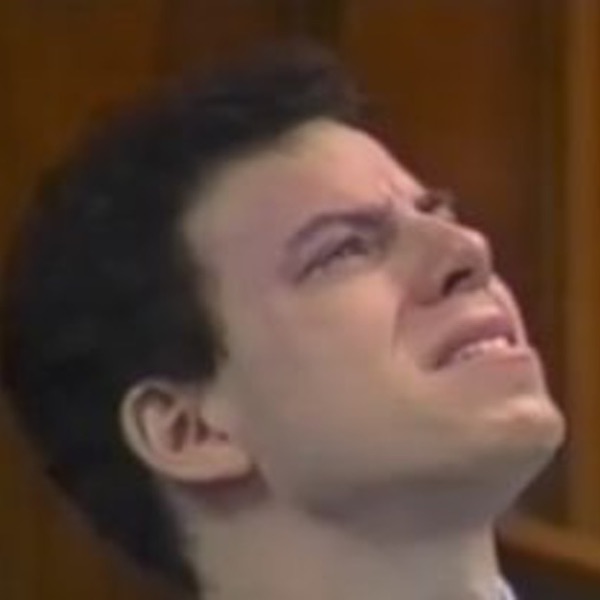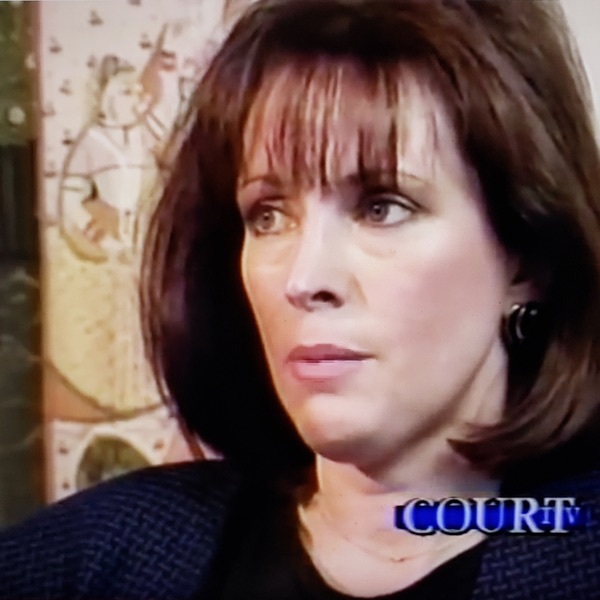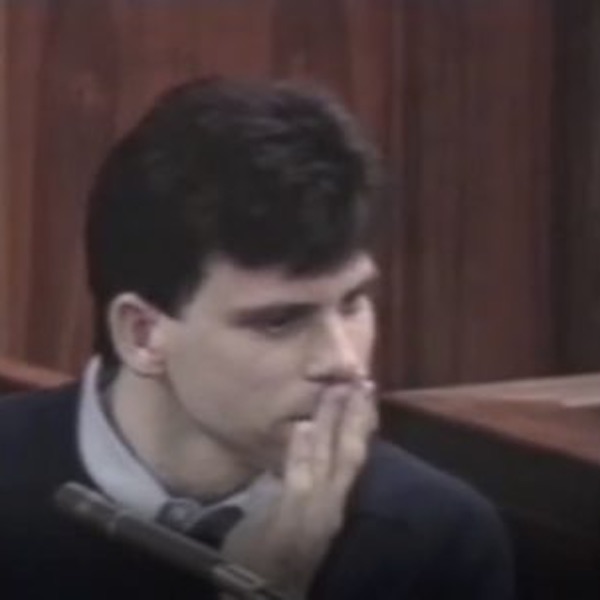There are four different versions of what happened the night of October 31, 1989.
That’s when Erik Menendez confessed to Dr. Jerome Oziel that he and his brother, Lyle, had killed their parents.
Two of the accounts are from the Menendez brothers themselves who testified in detail about that night during their trials.
The other narratives were provided by Oziel and his mistress, Judalon Smyth. Smyth changed her story several times from the original version she told the Beverly Hills Police in March 1990. Later, she gave Vanity Fair’s Dominick Dunne and ABC’s Diane Sawyer a slightly different story. When she testified about the night Erik confessed during the brothers’ first trial in November 1993, she revised her account again and claimed that Dr. Oziel was still controlling her mind while she was on the witness stand.
“The Rashomon effect” — named after the Japanese film masterpiece — describes how the same story is retold by different people who were involved.
In my book, I explain how the Rashomon effect applies to the night the Erik Menendez confessed.
The Confession (Excerpts from Chapter 24 “The Menendez Murders”)
Jerry Oziel and Judalon hotly disputed who was pursued and who was the pursuer, but they do agree that their lives, already in turmoil, were about to be further complicated by an astonishing twist of fate: They would be drawn together into the vortex of one of the most celebrated murder cases in U.S. history.
On Monday, October 30, 1989, Oziel, who had been staying at Smyth’s house, called home to pick up his messages—including one from Erik Menendez.
Erik made the call at the urging of his cousin Henry, who had witnessed the younger brother’s distraught state of mind. Based on what he knew of the family from previous counseling sessions, Oziel had an uncomfortable suspicion that Lyle and Erik might not be telling the truth. Erik, sounding agitated, said he wanted to see Oziel the next day and insisted that it be the last appointment of the afternoon. Oziel agreed to see Erik at 4 pm. Beneath his calm demeanor, the therapist knew he was facing a crisis. He was all but certain Erik Menendez intended to confess to the murder of his parents.
The events of the next 48 hours would be hotly debated and litigated for years to come as the four participants — Oziel, Smyth, and the Menendez brothers — gave conflicting accounts of what actually took place during two therapy sessions.
On Tuesday, October 31, Erik arrived at Oziel’s office on North Bedford Drive just before the appointed time. Erik appeared anxious and depressed. He had lost weight. When the session began, Erik talked about feeling “very isolated and alienated.” He told the therapist he was having nightmares with vivid images of his dead parents. Erik said he didn’t know if he wanted to live or die and thought perhaps he should be on some type of medication.
After an hour, Erik said he wanted to take a walk. After crossing Bedford Drive, the pair stopped at a park along Santa Monica Boulevard. After a long discussion about what a great man his father was, they headed back to the office. Just before entering the front door, Oziel said Erik leaned back against a parking meter, let out a deep sigh, and announced, “We did it.”
“You mean you killed your parents?” Oziel asked.
Erik said yes.
Oziel’s fear had come to pass. Suddenly, he was more than a therapist talking to his patient.
“I was having trouble telling him about why I was suicidal since I hadn’t told him that I killed my parents, and so he wasn’t really getting it,” recalled Erik. “And so I just decided that I needed to tell somebody, and I decided to tell him right then . . . I really wanted him at that point to tell me that I wasn’t a bad person. And he couldn’t do that unless he knew that I killed my parents.”
Oziel said the brothers called it the “perfect crime.”
Only Erik was having a hard time living with it. He kept dreaming about the gory scene in the TV room. His guilt was overwhelming him.
He had to confess to someone. Naturally, he had picked his therapist. Nobody had witnessed the crime. Nobody had found the weapons. Nobody had challenged their alibi. Nobody could point a finger at them.
Except now, of course, Oziel could.
“Does Lyle know you’re telling me this?” Oziel asked.
“No,” Erik said, adding that his brother might kill him when he found out. He said he planned to tell him during an upcoming vacation. Or maybe not at all.
“No. You definitely should,” said the therapist.
The last thing Oziel wanted was for Erik to leave his office and tell Lyle what he had done. He persuaded him that it would be much better, for all of them, if they called Lyle right then and asked him to come to Oziel’s office immediately to work through this together.
A few blocks away at the Menendez mansion, Lyle was passing out Halloween candy with his girlfriend Jamie Pisarcik When Lyle answered the phone, Oziel stated Erik had “told him everything.”
“What do you mean?” asked Lyle.
“Come over,” the therapist pleaded. “I don’t want to talk about this on the phone.”
With his heart pounding, Lyle drove to Oziel’s office. He had a strong feeling Erik had confessed the brothers’ involvement in the killings. Besides not trusting Oziel, Lyle worried that Erik and the therapist had discussed the brothers turning themselves into the police.
While waiting for Lyle to arrive, Judalon Smyth claimed Oziel took her into an outer hall and told her that, as he’d suspected, both boys were responsible for the killings of their parents. “I’m really afraid for you and my kids and myself,” he declared.
Lyle arrived sometime after 6:30 pm. Judalon Smyth said she was sitting in the waiting room when Lyle walked in. She saw him push the call button marked “Oziel” and then sit down, pick up a magazine and flip through it. “Been waiting long?” Smyth said he asked her. She shrugged, lamely.
“You know doctors,” she said. Then Oziel opened the door to his office and invited Lyle in.
Oziel pleaded with Lyle at the elevator, still trying to persuade him to continue their conversation. Lyle said he wasn’t sure he had anything more to say to him. He shook Oziel’s hand and, looking him in the eye, said, “Good luck, Dr. Oziel.”
Dr. L. Jerome Oziel went back upstairs and locked the door to the waiting room, then he locked the door to the hall, and then the door to his office. He got on the phone. The first call was to his wife. He explained the situation and told her she was in danger. He advised her to leave the house and find somewhere else to stay for a few days, making up a story for the kids about a gas leak in the kitchen. Then he called Dr. Jeff Lulow, his supervising psychologist, to think aloud about his dilemma.
Lulow listened to the scenario Oziel described with growing dismay. Lulow told Oziel he had an obligation to warn everyone he reasonably believed was in danger, revealing as much as they needed to know to appreciate the gravity of the threat and to take measures to protect themselves. He said that Oziel should make a record of the confession and put it in a safe-deposit box, giving the key to his attorney or someone he trusted with instructions that if anything suspicious happened to him, the notes should be turned over to police. He should then make sure his patients knew about that arrangement. Finally, Lulow suggested Oziel hire someone to protect him and send his family out of town on vacation.
While Smyth phoned a detective agency to inquire about hiring a bodyguard, Oziel made several other calls, to lawyers, other psychologists, and at least one, anonymously, to a small town police station where he laid out a hypothetical situation. He told his attorney, Brad Brunon, that he had clients who had committed a serious offense.
Oziel would later maintain that he believed reporting the brothers to police without succeeding in having them arrested would have been a fatal mistake. While Oziel was on the phone, Smyth said she was there, rubbing the back of his neck and shoulders as he talked. Oziel claimed she was never in his office that night—he went to Smyth’s house after he’d finished his calls, to warn her that her association with him put her in danger, and to avoid leading the brothers to his own home. But Smyth said they went together to Oziel’s house to pick up a suitcase his wife had left for him by the door.
That night, Smyth said, Oziel obsessed about the need to get the brothers to come see him one more time. The therapist expressed his fear and told her more details about the confession. If he could only have them in one more session, she said he kept repeating, he could get them under control.
Shortly after Erik’s confession, Dr. Oziel and his wife, Laurel — another therapist — moved Smyth into their house with their two young daughters in an effort to keep her from going to the Beverly Hills Police.
When the Oziels threw her out after four months, Smyth followed through on her threat and reported the brothers’ confession (which Oziel had gossiped about with her during pillow talk.) Two days later, Lyle Menendez was arrested after an audiotaped confession Smyth knew about was seized from Oziel during the execution of a search warrant.
The defense accused Oziel of secretly blackmailing the brothers during the first trial. During her testimony, Smyth had the courtroom filled with laughter as she described her obsessive romance with Oziel. Smyth claimed she was a patient of Dr. Oziel. But in cross examination, she was confronted with a written IOU she had given her lover for 500 sex acts. Smyth testified she’d been “programmed” by Oziel but had recently regained her “real memory back.”
Even for Southern California in the 1990s, a witness admitting her mind was controlled by a therapist using neurolinguistic programming was risky material for the defense to present. But the brothers’ attorneys rolled the dice, gambling that jurors would become disgusted with the bizarre saga of Oziel and Smyth.
The defense hoped the juries would want to purge the entre epic – including Erik Menendez’s confession – from their minds.
It was not to be.
MORE LIKE THIS?




